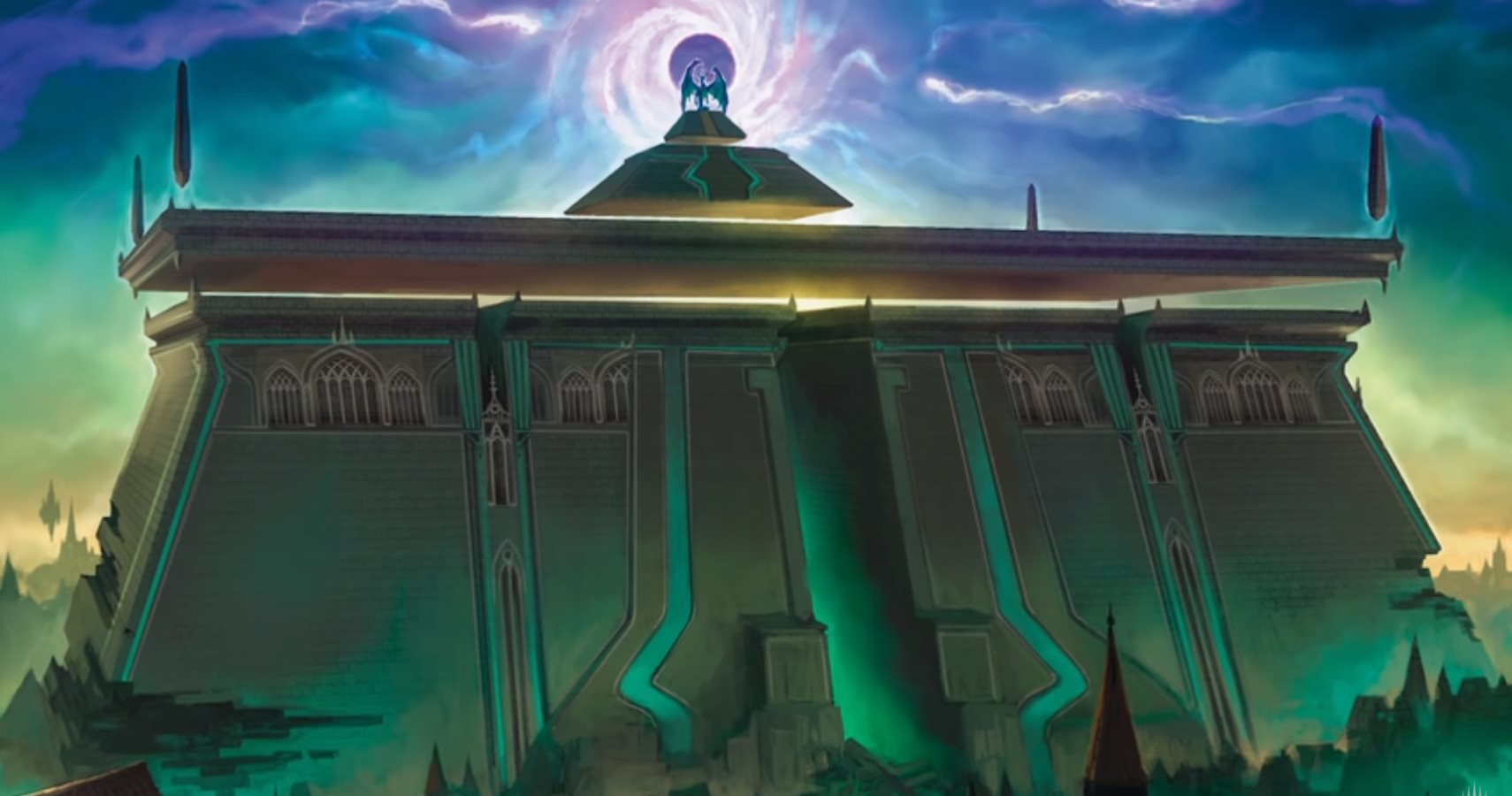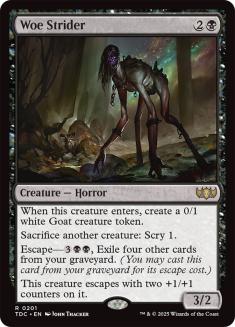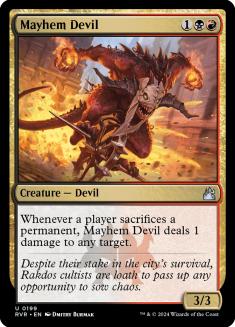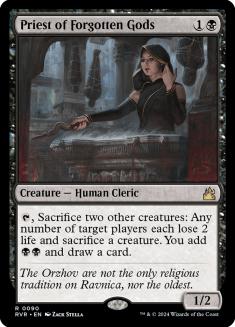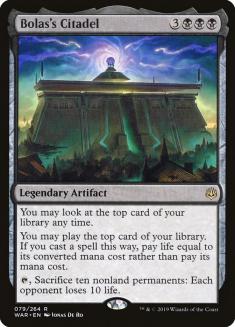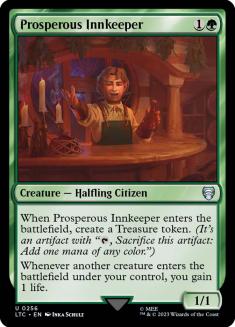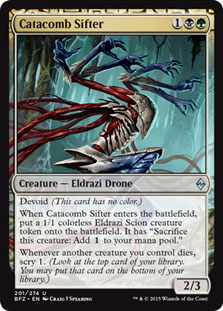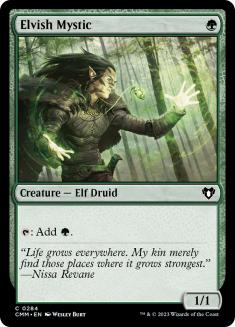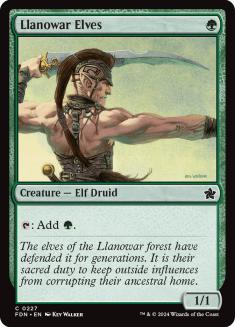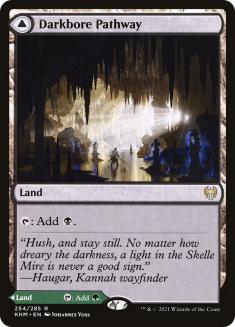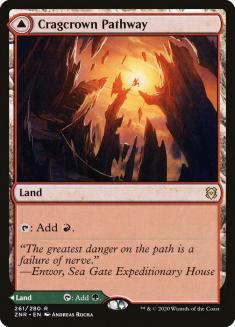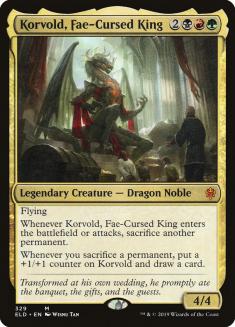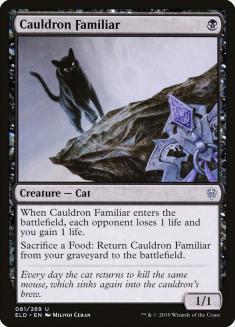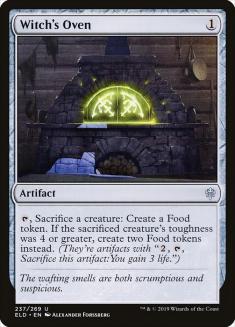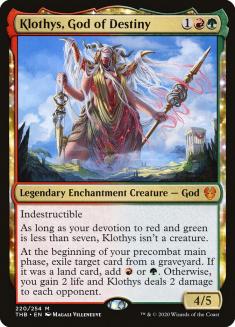Last week I made the case that Pioneer is Magic’s most underrated format, and this weekend of high-stakes Pioneer tournaments on Magic Online has only made that conviction firmer. Every archetype and playstyle is represented at the top tables and the unique decks I featured in that piece show what’s possible for anyone wanting to do their own thing.
The only problem? I couldn’t win with any of them!
With hours to go until the Super Qualifier on Magic Online last Friday, I was resigned to just picking a deck and phoning it in until I saw a message from Tommy Ashton, better known as stainerson, the winner of more online qualifiers than anyone else. Tommy had just been beaten soundly in a League by Jund Citadel featuring Prosperous Innkeeper and immediately identified it as the missing piece the deck needed. A quick League 5-0 of his own later, he was convinced and I was more than happy to jump on board.
The information cascade had begun. I managed to Top 8 the Super Qualifier with a hastily compiled list:
The next day, my exact 75 cards went on an undefeated run to win the Pioneer Challenge:
In the Pioneer Showcase on Sunday, Yuuki Ichikawa, who did so much to put Jund Sacrifice with Bolas’s Citadel on the map in Standard and Historic, finished in the Top 4 with his own take while Milan Bhayana (friend of the podcast!) took down the whole thing:
Ichikawa has put up absurd results over the years and Milan may be the easiest bet I’ve ever placed on someone:
That said, there are good reasons that mere mortals like me can succeed with Jund Citadel too. This shell will be familiar to anyone who follows Standard or Historic and has a proven record of success in Pioneer (Sam Pardee won the Strixhaven Championship after booking his seat by winning a qualifier on Magic Online with Jund Citadel), but it’s worth examining its place in this format.
At one level, this is like any other Sacrifice deck. You flood the battlefield with game objects and control it through a web of synergistic interactions between sacrifice outlets and sacrifice payoffs. This is a recipe for success against creature decks across all formats and is good in general when the game is about trading resources.
That describes many matchups in Pioneer but there are some crucial exceptions. Against the blue decks, the first Treasure Cruise or Dig Through Time is hard enough to slog through and often sets up a second copy, with Arclight Phoenix or Torrential Gearhulk coming along for the ride. It’s a daunting task to beat Niv-Mizzet Reborn or Bring to Light for Tibalt, Cosmic Impostor in a fair fight and those cards somehow feel small-ball compared to the nonsense you can achieve with Fires of Invention and Enigmatic Incarnation. Other opponents are playing a different game altogether with Lotus Field or Jeskai Ascendancy.
Trying to grind out a long game with Trail of Crumbs won’t cut it here. We need a superweapon.
Bolas’s Citadel goes bigger than any other card in Pioneer and Jund Sacrifice is the only shell that can offer it the proper support: lifegain, a low curve, and control over the top of your library via Woe Strider and Catacomb Sifter. I was sceptical of the card in previous builds and made a severe unforced error in only playing three copies in mine. It’s hard to cast if your mana creatures are under attack, and if your life total is under pressure, the Citadel becomes less effective as a final attempt to claw back into the game.
While this is all true to some extent, the games Citadel wins from behind where no other card could are much more important. In the matchups where you aren’t naturally advantaged as Jund Sacrifice, you are first and foremost a Bolas’s Citadel combo deck. Citadel is so strong, and this deck so good at enabling it, that this is enough to give you an edge in those matchups.
You are even better at playing towards Citadel now thanks to a breakout star from Adventures in the Forgotten Realms:
Previously you were obliged to play some number of Zulaport Cutthroats as a source of lifegain for Citadel chains and additional reach alongside Mayhem Devil, but it was the worst card in the deck by a clear margin and the first card you would shave in sideboarding in many matchups. Prosperous Innkeeper is a less conditional way to buffer your life total (Turn 2 Innkeeper into Turn 3 Catacomb Sifter or Woe Strider buys a lot of time against aggro) and helps you dig deeper with Citadel when you don’t have the Woe Strider that Cutthroat would need.
Just as importantly, Innkeeper’s Treasure creation offers a form of ramp that’s attached to a creature for your cards that care about that but immune to the creature removal that can slow you down. You can lose your to Elvish Mystic to Fatal Push without that delaying your Turn 3 Collected Company or sacrifice Innkeeper to Priest of the Forgotten Gods without giving up future mana.
The implicit mana fixing is useful too. It’s already a little hard to cast Mayhem Devil on-curve sometimes and the three black pips for Bolas’s Citadel can be tricky if you had to play a black Pathway on the other side to cast that Elvish Mystic or Mayhem Devil earlier.
Priest of Forgotten Gods is a big draw to Jund Sacrifice. There is a stronger correlation between drawing Priest and winning against certain creature decks than with any other card anywhere else. This deck is a little light on expendable bodies to feed to Priest and your other cards don’t offer an additional incentive to make those, so Priest leans on cards you want to play anyway that incidentally do that. For that reason, I’ve considered Callous Bloodmage and Lovestruck Beast for the few flex slots that round out the maindeck.
If Priest is your best card against many creature decks, it’s also excellent against creatureless decks where ramping to Bolas’s Citadel is your top priority. It enables a Turn 4 Citadel with any two other creatures or with mana creatures even if you miss a land drop, while helping with Citadel’s coloured mana requirements.
Catacomb Sifter is the one card in this list that isn’t legal in other formats and so it’s easy to miss its importance in this version. Sifter is another good three-drop to hit with Collected Company, creates another temporary mana source to work towards Citadel, makes two bodies for Priest or other sacrifice effects, and helps find Citadel with scry triggers or make it even stronger once it hits. Compared to Woe Strider, Catacomb Sifter is much better defensively; a 2/3 lines up well against the two-power creatures in Burn or Mono-Black Aggro and the 1/1 Eldrazi Scion is a more relevant blocker.
The eight-pack of Elvish Mystic + Llanowar Elves has been a staple of green creature decks since the creation of Pioneer and Jund Citadel makes great use of them. You want to jump up to Collected Company, which in turn leads you to play more three-drops that you can ramp into on Turn 2, and later a dead Elf is still a good Elf for Priest and Woe Strider.
Gilded Goose is less appealing for most green decks but in many ways the best mana creature for Jund Citadel. It helps to cast Mayhem Devil and then works well with it, gaining life with Food tokens feeds Citadel (and being a better blocker pads your life total there), and you are somewhat prone to flooding so a mana creature with late-game relevance is more useful. The major downside of Goose is its staggered mana production. It doesn’t set up the ideal curve of Turn 2 three-drop into Turn 3 Collected Company (or second three-drop without an untapped land). Still, the upside is high enough that I like the standard count of four copies of Goose instead of the full roster of Elves I had in my initial list.
Note that the last four cards discussed here all make mana in their own way (with each of them having some other utility for the deck) giving many permutations of cards that let you race to six mana for Bolas’s Citadel:
- Elvish Mystic/Llanowar Elves + Prosperous Innkeeper/Priest of Forgotten Gods + mana creature = Turn 3 Citadel (note that Goose can’t replace the first mana creature here)
- Prosperous Innkeeper + Prosperous Innkeeper/Catacomb Sifter = Turn 4 Citadel
- Priest of Forgotten Gods + Woe Strider/Catacomb Sifter = Turn 4 Citadel
The Pathways were a vital upgrade to allied colour pairs in particular and allow this deck to meet the odd demands of its manabase without a painful number of shocklands, but they have their own downsides there. If your lands are Darkbore Pathway and Cragcrown Pathway, you can’t cast Turn 1 Elvish Mystic/Llanowar Elves into Turn 2 Mayhem Devil and can’t make all three colours of mana between those two lands.
I would love to find a way to cut Mayhem Devil and allow a pristine Golgari manabase with sixteen good dual lands (Llanowar Wastes alongside Blooming Marsh/Darkbore Pathway/Overgrown Tomb) and even mana sinks in the form of creature lands like Lair of the Hydra, but Devil is such a powerful, singular effect that this is a very steep cost.
The other red card is Korvold, an excellent pivot for post-sideboard games against faster decks where Citadel is less reliable or against grindy decks as an additional threat that wins games if unchecked. I was drawn to Korvold more than Citadel when I dabbled in the archetype months ago but found it was weaker than I expected without the additional free sacrifice synergies found in other formats, namely a joke we’ve all heard too often:
The Cauldron Familiar + Witch’s Oven combo was a centerpiece of Rakdos and Jund Sacrifice in Standard and Historic, and is an option in Pioneer even without Trail of Crumbs; Sam Pardee’s winning list from February ran a small Familiar package alongside Collected Company and Bolas’s Citadel. Each of these cards is weak without the other, prompting you to play the full set of each, but this increases the chance of drawing one or more copies of Familiar or Oven by themselves, adding to the problem of drawing too much air, and eating into other creature slots, which in turn makes Collected Company worse. Even if this recipe does come together, Mayhem Devil is your only reward for shuffling Familiar between zones like this without additional payoffs like Midnight Reaper.
Klothys, God of Destiny is the best card you could ask for against a tough matchup in Dimir Control, a strong card against the red aggro decks which are still the most popular archetype in Pioneer by a fair margin, and great against some draws from a (former?) best deck in Izzet Phoenix. My maindeck copies were an extreme measure but I wouldn’t leave home without two copies in my 75.
These cards need no explanation, but don’t be deceived by their generality. This is not just a Collected Company deck that needs to maintain a high creature count; those creatures also rely on each other to accomplish anything. You aren’t interested in a generic exchange of resources, so if you don’t have specific targets in mind that have a big impact on the game, don’t bring these in.
Here’s the list I would register:
Creatures (30)
- 2 Llanowar Elves
- 3 Elvish Mystic
- 4 Catacomb Sifter
- 4 Priest of Forgotten Gods
- 4 Mayhem Devil
- 4 Gilded Goose
- 1 Korvold, Fae-Cursed King
- 4 Woe Strider
- 4 Prosperous Innkeeper
Lands (22)
Spells (8)

Assassin’s Trophy has certain important hits (Kalitas, Traitor of Ghet from Dimir Control or Mono-Black Vampires as well as Yasharn, Implacable Earth from Five-Color Niv-Mizzet) but also gives you an answer to the Book of Exalted Deeds + Mutavault/Faceless Haven combo that you can eventually find on a Citadel turn.
Some important sequencing tips and tactical considerations to keep in mind:
- Priest of Forgotten Gods and Mayhem Devil are good against different battlefield states (few large creatures versus many small creatures), but together they can take down both. When you activate Priest, your Devil triggers will go on top of the stack, helping to remove any smaller creatures that would take a bullet for the main threat. Note that the Devil will trigger again when they sacrifice a creature to Priest.
- You can target any number of players, including yourself, with Priest. This comes up when you have no other sacrifice outlet but want an additional Devil trigger, need to fill your graveyard to escape Woe Strider, or want to sacrifice Strider itself so that you can get an untapped larger Strider (and the Goat token it comes with).
- Woe Strider and Catacomb Sifter let you scry at instant speed and you often have to decide how much you want to pare down your own battlefield to dig for a specific card. With Collected Company you can sacrifice Sifter’s token to put a scry trigger on the stack on top of Company (by necessity if you had to use that mana to cast Company) to increase your odds of hitting a certain creature or cast Company in response to that trigger so that the scry isn’t ‘wasted’ and affects your next draw step.
- Targeting Woe Strider with your own Devil triggers can save it from removal that would exile it, allowing it to come back later. Similarly, with Catacomb Sifter you can have Devil shoot your own one-toughness creatures if you don’t have a repeatable sacrifice outlet but desperately need to dig for a card (as Sifter checks for creatures dying, not being sacrificed).
For a format written off as stale, Pioneer proved to be dynamic and diverse once again this weekend. Things will shift again as players adapt, but this will remain a powerful and tremendously fun option in an open format.

